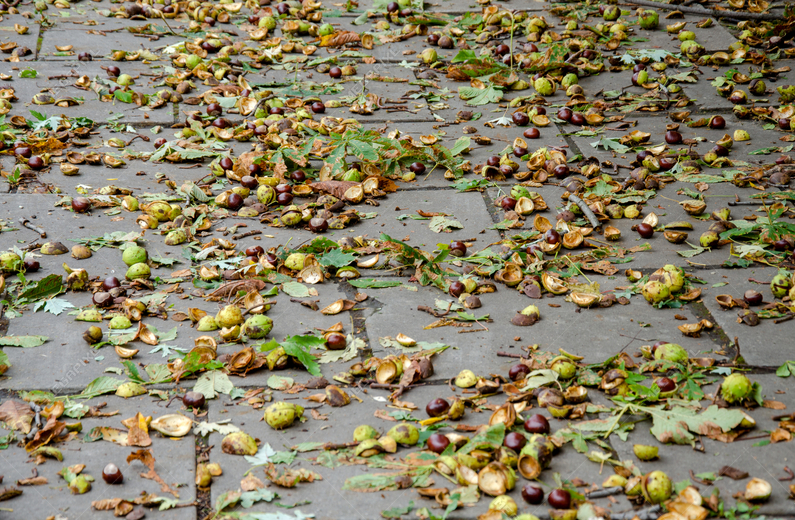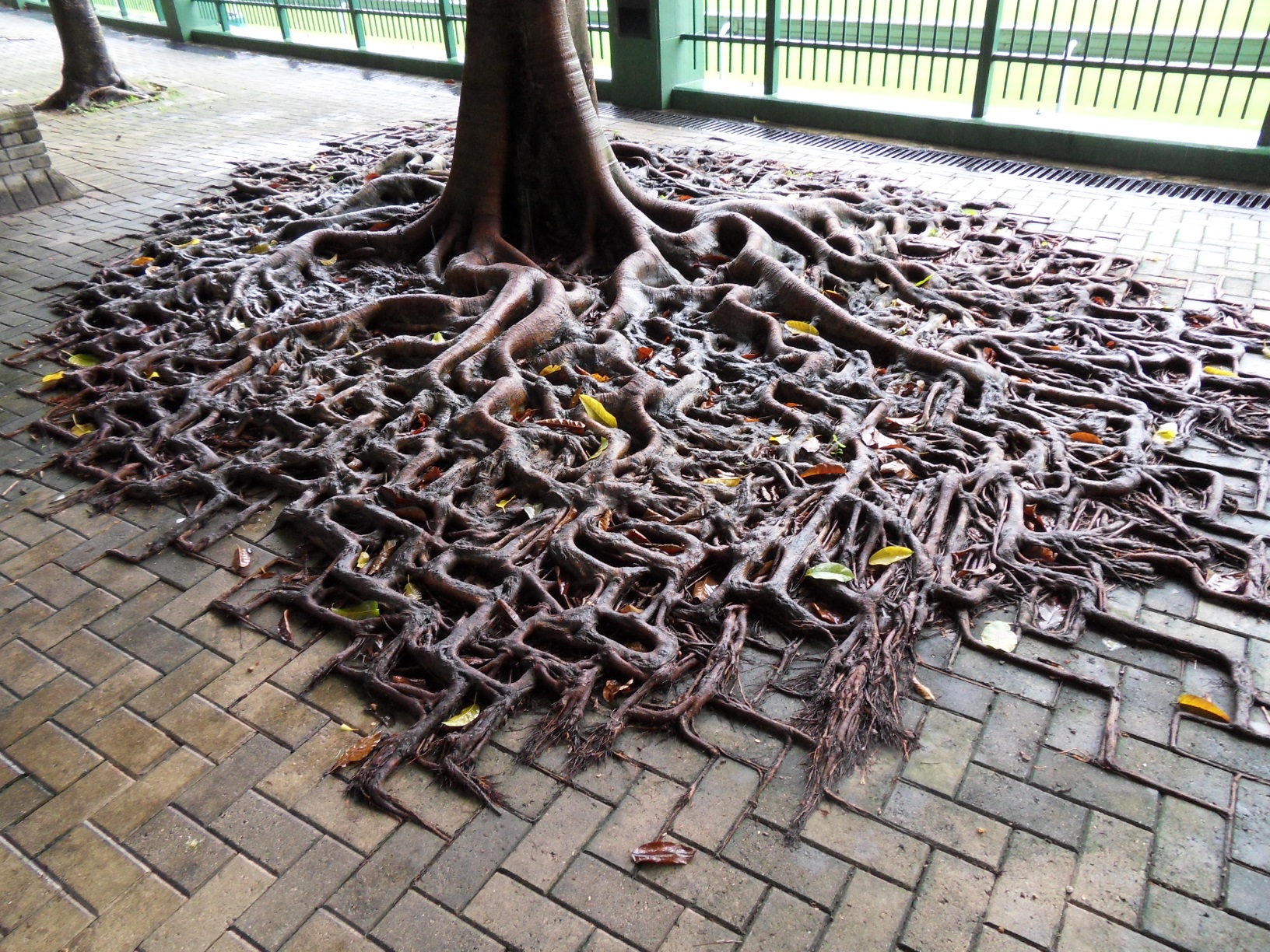Tree-lined streets, whether dappled by sunlight peeking through the foliage of a verdant canopy or dotted by mounds of autumnal decay, are an unmistakable motif in classic Americana that echo the promise of prosperity familiarly ingrained in our cultural mindscape. More than promises, however, numerous researchers credit a wide variety of benefits to wooded public rights-of-way, including lower electricity bills, safer roadways, fewer incidents of crime, and even higher birth weights. Research from the United States Forest Service also outlines the economic advantage of street trees: increased property values and improved energy costs raking in the billions and millions in cities like Portland, Oregon and Sacramento, California that amount to over five times the cost of maintaining them. Despite evidence that money may grow on trees, after all, the U.S. Forest Service reports a loss of 36 million urban trees per year since 2009 and several Title II entities are sprucing up their programs to encourage tree-planting. Turning over a new leaf may not be so easy for those managing compliance with the Americans with Disabilities Act (ADA), although, as trees impact a number of aspects regarding accessibility that may discourage some from planting. So, how does an urban planner or ADA coordinator nurture an inclusive and compliant community?
Many of the issues causing noncompliance are rooted in how quickly plants grow and change, and entities may not realize what the ADA requires of tree management. Under 28 C.F.R. 35.133 of the Americans with Disabilities Act, Title II tree-trimmers are obligated to maintain their leafy wards on a regular basis to protect pedestrians and cyclists using public rights-of-way for crucial reasons. Protruding branches and vegetation pose considerable risk of injury. One study from the University of Santa Cruz reports 86% of head-level accidents experienced by individuals with visual impairments took place outdoors, of which the majority were attributed to tree branches. More so, the obligation to keep public rights-of-way accessible, and to keep surfaces smooth, stable, and slip-resistant, includes clearing paths of any material that trees may deposit like seeds, fruit, and leaves. Additionally, one of the most profound and litigious consequences of tree growth entails its impact on sidewalk compliance, which can create tripping hazards in as little as ¼-inch of level change and tip wheelchairs on running slopes as low as 1:20 and cross-slopes as low as 1:48.
While ADA lawsuits over sidewalks have often been argued to be low-hanging fruit for vexatious litigation, recent court cases have proven  these matters to be veritable kindling for severe consequences. Now considered a landmark case in ADA enforcement, the City of Los Angeles settled for $1.3 billion after thousands of miles of hardscape were found egregiously out of compliance. Many of these sidewalks were heaved up and broken apart by trees that were planted without consideration for the nature of certain species, such as the fast-growing Indian Laurel Fig, leaving Los Angeleno Loraxes pining for compromise to protect their neighbors with disabilities as well as their neighborhood’s beloved ficus. Street trees aren’t just a West Coast problem for ADA compliance, though: New York City has been working to compromise through their Trees and Sidewalks program since 2005. Despite providing an efficient means of communicating tree-related needs, a 2017 audit cultivated criticism of the program regarding inefficient implementation and inability to prevent substantial injuries directly related to tree-impacted public rights-of-way that led to $1.3 million in litigation settlements.
these matters to be veritable kindling for severe consequences. Now considered a landmark case in ADA enforcement, the City of Los Angeles settled for $1.3 billion after thousands of miles of hardscape were found egregiously out of compliance. Many of these sidewalks were heaved up and broken apart by trees that were planted without consideration for the nature of certain species, such as the fast-growing Indian Laurel Fig, leaving Los Angeleno Loraxes pining for compromise to protect their neighbors with disabilities as well as their neighborhood’s beloved ficus. Street trees aren’t just a West Coast problem for ADA compliance, though: New York City has been working to compromise through their Trees and Sidewalks program since 2005. Despite providing an efficient means of communicating tree-related needs, a 2017 audit cultivated criticism of the program regarding inefficient implementation and inability to prevent substantial injuries directly related to tree-impacted public rights-of-way that led to $1.3 million in litigation settlements.
A large portion of ensuring compliance and avoiding litigation involves logging solutions in documents like an ADA transition plan. Policies, procedures, and toolkits that establish guidelines for regular maintenance, incorporate design standards (such as planting distances), and streamline communication between parks and engineering departments are vital, according to landscape architect Justin Martin, who adds “A final, key piece to addressing tree and sidewalk conflicts is funding.” By establishing a budget that accounts for seasonal support and trends in a tree’s life cycle, entities can more-easily weather the effect of change as it arises — weather included. Designing new projects from the ground up makes it much easier to consider the ground below, which may not be possible for trees already planted.
Where foresight is granted, policies, procedures, and budgets become the framework for successful practices, and details surrounding the nature of trees should be included to deter sidewalk-tree conflicts. Root spread is attributed to a tree’s search for water, so account for future street tree needs, such as growth rate and nutrient demands, when choosing types of trees. Focus on native species that are acclimated to the local ecosystem, acknowledge an appropriate soil volume ratio for the space being planted, and avoid those with a reputation for uprooting structures. Fruit trees, a source of ongoing controversy, are a gorgeous temptation for many planters that is often not recommended for street trees, according to the Society of Municipal Arborists (SMA). “The challenges I see for fruit trees along streets are clearance, harvest, cleanup, and safety,” explains forester Gordon Mann, echoing the concerns of his peers in a 2009 SMA roundtable. Instead, select sterile and seedless cultivars so as to ease seasonal labor and prevent the liability generated by trees known to drop obnoxious amounts of fruit and nuts. Lastly, choosing heartier types that can withstand frequent pruning is another factor for preserving trees when trimming vegetation that threatens pedestrians.
Nevertheless, retroactive measures may need to incorporate a bit more branching out. Planting fruit trees may not be SMA-recommended, however, foliar sprays containing ethephon or naphthaleneacetic acid can prevent or reduce seed-bearing in matured growth. Furthermore,  adopting regular hand-picking techniques in maintenance procedures assures trees are being thinned in healthy, reliable fashions. Strategic watering practices have, and still, provide a valuable method of curbing curb-bound roots, yet the possibilities of tree maintenance are growing as quickly as the trees being maintained. Once among only a few options to resolve persistent structural conflicts, ramping, or “bridging,” public rights-of-way to hold traditional concrete over the root bed is one way to manage sidewalk-tree interactions that is steadily being modernized with the introduction of rubberized surfaces and growth barriers. Alongside the several options available for new and established construction, many entities are integrating the latest digital technologies for meeting maintenance criteria under the ADA. Like New York’s Trees and Sidewalks program previously mentioned, these “smart city” mobile application-based programs allow the inventorying of street trees and real-time tracking of tree-related reports. From scientific understanding to advancements in industry, the 21st century is steadily embodying the Chinese proverb, “The best time to plant a tree was 20 years ago; the second best time is now.”
adopting regular hand-picking techniques in maintenance procedures assures trees are being thinned in healthy, reliable fashions. Strategic watering practices have, and still, provide a valuable method of curbing curb-bound roots, yet the possibilities of tree maintenance are growing as quickly as the trees being maintained. Once among only a few options to resolve persistent structural conflicts, ramping, or “bridging,” public rights-of-way to hold traditional concrete over the root bed is one way to manage sidewalk-tree interactions that is steadily being modernized with the introduction of rubberized surfaces and growth barriers. Alongside the several options available for new and established construction, many entities are integrating the latest digital technologies for meeting maintenance criteria under the ADA. Like New York’s Trees and Sidewalks program previously mentioned, these “smart city” mobile application-based programs allow the inventorying of street trees and real-time tracking of tree-related reports. From scientific understanding to advancements in industry, the 21st century is steadily embodying the Chinese proverb, “The best time to plant a tree was 20 years ago; the second best time is now.”
Back to the motif — the sun-speckled sidewalks guarded by the leafed limbs of urban cover, and every other way a thesaurus could word the perfect afternoon outing — there is a distinct allegory that aligns the prosperity symbolized by street trees with that of an inclusive and welcoming community ripe with opportunity. It’s a portrait of which every person deserves to be the subject; a metaphor that every entity holds the responsibility to uphold. In the truest spirit of Americana, the Americans with Disabilities Act, preserves accessibility to the economic, social, and environmental wealth of trees (and the communities they shade) for every individual to enjoy.
After all the obstacles of 2020, may you and your community sprout a future of prosperity and growth in 2021. Happy New Year from your friends at Accessology!





